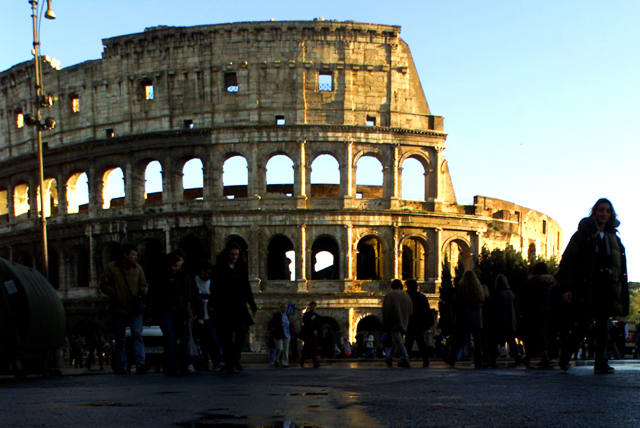Archaeologists learn about 16th-Century medicine for Caesar's Forum dig

Researchers have connected a recent excavation with a 16th-century hospital that dealt with plague victims.
Excavations in Caesar's Forum in Rome have shed new light on 16th-century medical practices, particularly on the disposal of hazardous materials.
In a recently published peer-reviewed study, researchers found that a 2021 excavation in Caesar's Forum in Rome was related to a 2009 excavation of the Ospedale dei Fornari at the Piazza della Madonna di Loreto. Both excavations involved suspected dump sites where waste was disposed of. The Ospedale dei Fornari was a hospital established in the 16th century by a baker's guild near the site of Caesar's Forum.
Researchers believe that the 2021 excavation is related to the 2009 Ospedale dei Fornari excavation due to several key similarities in the types of ceramics and glassware found at both sites. The findings can be divided into three major groups, medical equipment, food-related equipment, and personal objects.
Many of the medical objects found in the 2021 excavation are strikingly similar to those found at the 2009 excavation, with researchers are going so far as to call them identical. Some of these items include small ceramic medicine containers, thin-walled glass-blown vessels, and urine flasks, called Matula in Latin.
Urine was an incredibly important aspect of Renaissance medicine as doctors used the patient's urine to detect conditions such as jaundice, kidney disease, or diabetes. Urine flasks are often hard to identify in archaeological digs due to their similarity to oil lamps. These were identified due to the obvious medical nature of the dump.
The food-related finds are either cooking pots used for reheating food or plates and bowls used to individually serve the patient's food. As with the 2009 excavation, several personalized pieces of crockery were found emblazoned with family heraldry, leading to suspicions that some may have brought their own family crockery, rather than use the plain set provided by the hospital.
Patients were typically provided with a standard set of items for personal use most likely as a hygienic measure. This was comprised of a jug, drinking glass, bowl, and plate, these items were likely disposed of in the pits when the patient left the hospital.
One workshop produced the ceramics for the hospital
Researchers believe that these items were all sourced from the same workshop. Several sites throughout Rome have contained similar ceramics, leading researchers to conclude that all these items belong to a distinctly Roman Renaissance workshop.
The 2021 excavation also yielded several lead clamps along with carbonized wood. Researchers believe this is evidence that the hospital followed standard 16th-century protocol in regard to the plague. A 1588 manual tells doctors to burn all furniture in a house that has been contaminated by plague. Although it is possible that the wood is simply the remains of disposed trays used for serving food.
Jerusalem Post Store
`; document.getElementById("linkPremium").innerHTML = cont; var divWithLink = document.getElementById("premium-link"); if (divWithLink !== null && divWithLink !== 'undefined') { divWithLink.style.border = "solid 1px #cb0f3e"; divWithLink.style.textAlign = "center"; divWithLink.style.marginBottom = "15px"; divWithLink.style.marginTop = "15px"; divWithLink.style.width = "100%"; divWithLink.style.backgroundColor = "#122952"; divWithLink.style.color = "#ffffff"; divWithLink.style.lineHeight = "1.5"; } } (function (v, i) { });

